Selected Publications
Please see below for recent and selected past publications. Click on the title to access the articles.
-
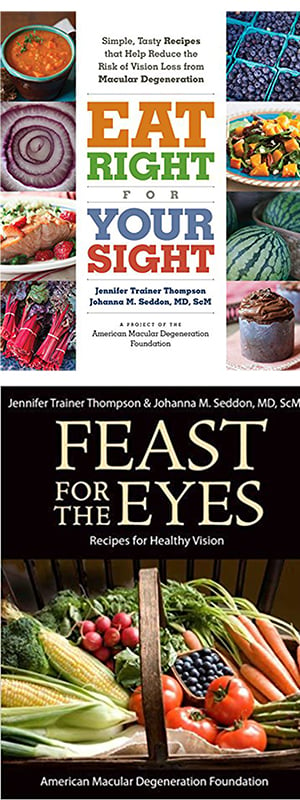
Cookbooks published incorporating Dr. Seddon’s nutritional research -
Dr. Seddon has published several research findings about the associations between diet and nutrients and the impact on risk of AMD. These results have been applied to current dietary guidelines for people with AMD.
See Youtube "Eat Right for Your Sight" !
In a collaboration with AMDF, Dr. Seddon has published these 2 cookbooks, Eat Right for Your Sight, and Feast for the Eyes; which incorporate her research findings into healthy recipes, with the goal of reducing visual loss due to AMD.
As noted in Dr. Seddon's 2014 Introduction of these books
“ YOU ARE WHAT YOU EAT”
was a book her father had when she was growing up, and now we know how true that is, especially for AMD.
-

The role of nutritional factors in transitioning between early, mid, and late stages of age-related macular degeneration: prospective longitudinal analysis - 2024
Background: Transitions between different stages of age-related macular degeneration (AMD) are not completely captured by traditional survival models with an end point of advanced AMD. Objectives: This study aimed to explore the transitions from early and intermediate AMD to higher non-advanced and advanced stages and determine the contributions of nutritional factors to these outcomes. Methods: Eyes with early or intermediate AMD at baseline, classified according to the Age-Related Eye Disease Study severity scale, were included in this prospective longitudinal analysis. Foods and the biologically active nutrients associated with AMD [green leafy vegetables, fish, lutein/zeaxanthin (LZ), and ω-3 (n–3) fatty acids] were determined by a baseline food frequency questionnaire. Progression was defined as eyes transitioning to higher severity groups including non-advanced and advanced stages over 5 years, confirmed at 2 consecutive visits. Cox proportional hazards models for foods and nutrients were analyzed adjusting for demographics, lifestyle, baseline macular status, a family history of AMD, caloric intake, and genetic risk.Results: Among 2697 eyes, 616 (23%) progressed to higher severity groups. In the food group model, higher intake of green leafy vegetables reduced incidence of transitions {hazard ratio [HR] (≥2.7 servings/wk compared with none): 0.75; 95% confidence interval [CI]: 0.59, 0.96; P = 0.02}. Higher fish intake was also protective [HR (≥ two 4-ounce servings/wk compared with <2): 0.79; 95% CI: 0.65, 0.95; P = 0.01]. In the nutrient model, LZ intake was protective [HR (≥2 mg/d compared with <2): 0.76; 95% CI: 0.60, 0.96; P = 0.02]. Higher intake of ω-3 fatty acids also tended to be beneficial [HR (≥0.7 g/wk compared with <0.7): 0.85; 95% CI: 0.71, 1.01; P = 0.06].Conclusions: Increased consumption of green leafy vegetables, LZ, and fish nutritionally rich in ω-3 fatty acids during the initial stages of AMD may reduce rates of progression to higher severity of this debilitating disease. -

Risk and protection of different rare protein-coding variants of complement component C4A in age-related macular degeneration - 2024
Introduction: Age-related macular degeneration (AMD) is the leading cause of central vision loss in the elderly. One-third of the genetic contribution to this disease remains unexplained. Methods: We analyzed targeted sequencing data from two independent cohorts (4,245 cases, 1,668 controls) which included genomic regions of known AMD loci in 49 genes.
Results: At a false discovery rate of <0.01, we identified 11 low-frequency AMD variants (minor allele frequency <0.05). Two of those variants were present in the complement C4A gene, including the replacement of the residues that contribute to the Rodgers-1/Chido-1 blood group antigens: [VDLL1207-1210ADLR (V1207A)] with discovery odds ratio (OR) = 1.7 (p = 3.2 × 10−5) which was replicated in the UK Biobank dataset (3,294 cases, 200,086 controls, OR = 1.52, p = 0.037). A novel variant associated with reduced risk for AMD in our discovery cohort was P1120T, one of the four C4A-isotypic residues. Gene-based tests yielded aggregate effects of nonsynonymous variants in 10 genes including C4A, which were associated with increased risk of AMD. In human eye tissues, immunostaining demonstrated C4A protein accumulation in and around endothelial cells of retinal and choroidal vasculature, and total C4 in soft drusen.
Conclusion: Our results indicate that C4A protein in the complement activation pathways may play a role in the pathogenesis of AMD
-

Deep ensemble learning for automated non-advanced AMD classification using optimized retinal layer segmentation and SD-OCT scans - 2023
Background: Accurate retinal layer segmentation in optical coherence tomography (OCT) images is crucial for quantitatively analyzing age-related macular degeneration (AMD) and monitoring its progression. However, previous retinal segmentation models depend on experienced experts and manually annotating retinal layers is time-consuming. On the other hand, accuracy of AMD diagnosis is directly related to the segmentation model's performance. To address these issues, we aimed to improve AMD detection using optimized retinal layer segmentation and deep ensemble learning. Method: We integrated a graph-cut algorithm with a cubic spline to automatically annotate 11 retinal boundaries. The refined images were fed into a deep ensemble mechanism that combined a Bagged Tree and end-to-end deep learning classifiers. We tested the developed deep ensemble model on internal and external datasets.
Results: The total error rates for our segmentation model using the boundary refinement approach was significantly lower than OCT Explorer segmentations (1.7% vs. 7.8%, p-value = 0.03). We utilized the refinement approach to quantify 169 imaging features using Zeiss SD-OCT volume scans. The presence of drusen and thickness of total retina, neurosensory retina, and ellipsoid zone to inner-outer segment (EZ-ISOS) thickness had higher contributions to AMD classification compared to other features. The developed ensemble learning model obtained a higher diagnostic accuracy in a shorter time compared with two human graders. The area under the curve (AUC) for normal vs. early AMD was 99.4%. Conclusion: Testing results showed that the developed framework is repeatable and effective as a potentially valuable tool in retinal imaging research.
-

Blue Light Exposure: Ocular Hazards and Prevention-A Narrative Review - 2023
Introduction: Exposure to blue light has seriously increased in our environment since the arrival of light emitting diodes (LEDs) and, in recent years, the proliferation of digital devices rich in blue light. This raises some questions about its potential deleterious effects on eye health. The aim of this narrative review is to provide an update on the ocular effects of blue light and to discuss the efficiency of methods of protection and prevention against potential blue light-induced ocular injury. Methods: The search of relevant English articles was conducted in PubMed, Medline, and Google Scholar databases until December 2022.
Results: Blue light exposure provokes photochemical reactions in most eye tissues, in particular the cornea, the lens, and the retina. In vitro and in vivo studies have shown that certain exposures to blue light (depending on the wavelength or intensity) can cause temporary or permanent damage to some structures of the eye, especially the retina. However, currently, there is no evidence that screen use and LEDs in normal use are deleterious to the human retina. Regarding protection, there is currently no evidence of a beneficial effect of blue blocking lenses for the prevention of eye diseases, in particular age-related macular degeneration (AMD). In humans, macular pigments (composed of lutein and zeaxanthin) represent a natural protection by filtering blue light, and can be increased through increased intake from foods or food supplements. These nutrients are associated with lower risk for AMD and cataract. Antioxidants such as vitamins C, E, or zinc might also contribute to the prevention of photochemical ocular damage by preventing oxidative stress. Conclusion: Currently, there is no evidence that LEDs in normal use at domestic intensity levels or in screen devices are retinotoxic to the human eye. However, the potential toxicity of long-term cumulative exposure and the dose-response effect are currently unknown.
-

Family History of Age-Related Macular Degeneration and Genetics Predict Progression to Advanced Age-Related Macular Degeneration Adjusting for Macular Status, Demographic, and Lifestyle Factors - 2023
Age-related macular degeneration (AMD) is the most common cause of visual impairment among the elderly in developed countries, and its prevalence is thus increasing as the population ages; however, treatment options remain limited because the etiology and pathogenesis of AMD are incompletely defined. Recently, much progress has been made in gene discovery and mechanistic studies, which clearly indicate that AMD involves the interaction of multiple genetic and environmental factors. The identification of genes that have a substantial impact on the risk for AMD is not only facilitating the diagnosis and screening of populations at risk but is also elucidating key molecular pathways of pathogenesis. Pharmacogenetic studies of treatment responsiveness among patients with the “wet” form of AMD are increasingly proving to be clinically relevant; pharmacogenetic approaches hold great promise for both identifying patients with the best chance for vision recovery as well as tailoring individualized therapies.
-

Evaluation of Risk Prediction with Hierarchical Data: Dependency Adjusted Confidence Intervals for the AUC - 2023
The area under the true ROC curve (AUC) is routinely used to determine how strongly a given model discriminates between the levels of a binary outcome. Standard inference with the AUC requires that outcomes be independent of each other. To overcome this limitation, a method was developed for the estimation of the variance of the AUC in the setting of two-level hierarchical data using probit-transformed prediction scores generated from generalized estimating equation models, thereby allowing for the application of inferential methods. This manuscript presents an extension of this approach so that inference for the AUC may be performed in a three-level hierarchical data setting (e.g., eyes nested within persons and persons nested within families). A method that accounts for the effect of tied prediction scores on inference is also described. The performance of 95% confidence intervals around the AUC was assessed through the simulation of three-level clustered data in multiple settings, including ones with tied data and variable cluster sizes. Across all settings, the actual 95% confidence interval coverage varied from 0.943 to 0.958, and the ratio of the theoretical variance to the empirical variance of the AUC varied from 0.920 to 1.013. The results are better than those from existing methods. Two examples of applying the proposed methodology are presented.
-

Functional analysis of rare genetic variants in complement factor I in advanced age-related macular degeneration - 2022
Factor I (FI) is a serine protease inhibitor of the complement system. Heterozygous rare genetic variants in complement factor I (CFI) are associated with advanced age-related macular degeneration (AMD). The clinical impact of these variants is unknown since a majority have not been functionally characterized and are classified as ‘variants of uncertain significance’ (VUS). This study assessed the functional significance of VUS in CFI. Our previous cross-sectional study using a serum-based assay demonstrated that CFI variants in advanced AMD can be categorized into three types. Type 1 variants cause a quantitative deficiency of FI. Type 2 variants demonstrate a qualitative deficiency. However, Type 3 variants consist of VUS that are less dysfunctional than Types 1 and 2 but are not as biologically active as wild type (WT). In this study, we employed site-directed mutagenesis followed by expression of the recombinant variant and a comprehensive set of functional assays to characterize nine Type 3 variants that were identified in 37 individuals. Our studies establish that the expression of the recombinant protein compared with WT is reduced for R202I, Q217H, S221Y and G263V. Further, G362A and N536K, albeit expressed normally, have significantly less cofactor activity. These results led to re-categorization of CFI variants R202I, Q217H, S221Y and G263V as Type 1 variants and to reclassification of N536K and G362A as Type 2. The variants K441R, Q462H and I492L showed no functional defect and remained as Type 3. This study highlights the utility of an in-depth biochemical analysis in defining the pathologic and clinical implications of complement variants underlying AMD.
-

Identifying Novel Genes and Variants in Immune and Coagulation Pathways Associated with Macular Degeneration - 2022
Purpose: To select individuals and families with a low genetic burden for age-related macular degeneration (AMD), to inform the clinical diagnosis of macular disorders, and to find novel genetic variants associated with maculopathies.
Design: Genetic association study based on targeted and whole-exome sequencing. Participants: A total of 758 subjects (481 individuals with maculopathy and 277 controls), including 316 individuals in 72 families. Methods: We focused on 150 genes involved in the complement, coagulation, and inflammatory pathways. Single-variant tests were performed on 7755 variants shared among ≥ 5 subjects using logistic regression. Gene-based tests were used to evaluate aggregate effects from rare and low-frequency variants (at minor allele frequency [MAF] ≤ 5% or ≤ 1%) in a gene using burden tests. For families whose affected members had a low burden of genetic risk based on known common and rare variants related to AMD, we searched for rare variants (MAF < 0.001) whose risk alleles occurred in ≥ 80% of affected individuals but not in controls. Immunohistochemistry was performed to determine the protein expression of a novel gene (coagulation factor II thrombin receptor-like 2 [F2RL2]) in retinal tissues.
Main Outcomes and Measures: Genotypes and phenotypes of macular degeneration
Results: We confirmed the association of a synonymous variant in complement factor H (Ala473, rs2274700, proxy to intronic rs1410996, r2 = 1) with maculopathy (odds ratio, 0.64; P = 4.5 × 10–4). Higher AMD polygenic risk scores (PRSs) were associated with intermediate and advanced AMD. Among families with low PRSs and no known rare variants for maculopathy, we identified 2 novel, highly penetrant missense rare variants in ADAM15, A disintegrin and metalloprotease, metallopeptidase domain 15 (p.Arg288Cys) and F2RL2 (p.Leu289Arg). Immunohistochemistry analyses revealed F2RL2 protein expression in cone photoreceptor outer segments and Müller glia cells of human and pig retinas. Coagulation factor II thrombin receptor-like 2 expression appeared increased in fibrotic areas in advanced AMD samples with neovascularization, suggesting that F2RL2 may play a role in the progression to advanced macular disease. Conclusions: New missense rare variants in the genes ADAM15 and F2RL2 were associated with maculopathies. Results suggest that novel genes related to the coagulation and immune pathways may be involved in the pathogenesis of macular diseases.
-

Rare Dysfunctional Complement Factor I Genetic Variants and Progression to Advanced Age-Related Macular Degeneration - 2022
Purpose: To evaluate associations between rare dysfunctional complement factor I (CFI) genetic variant status and progression to advanced age-related macular degeneration (AAMD), geographic atrophy (GA), and neovascular disease (NV). Design: Prospective, longitudinal study Participants: Patients aged 55 to 80 years at baseline identifying as White with non-AAMD in 1 or both eyes at baseline were included. Follow-up grades were assigned as early, intermediate, or AAMD (GA or NV). CFI variants were categorized using genotyping and sequencing platforms. Methods: Analyses were performed using the Seddon Longitudinal Cohort Study (N = 2116 subjects, 3901 eyes, and mean follow-up of 8.3 years) and the Age-Related Eye Disease Study (N = 2837 subjects, 5200 eyes, and mean follow-up of 9.2 years). CFI rare variants associated with low serum factor I (FI) protein levels and decreased FI function (type 1), other AMD genetic variants, and demographic, behavioral, and ocular factors were evaluated. Generalized estimating equations methods were used to assess the association between CFI rare variants and progression, independent of other genetic variants and covariates.
Main Outcome Measures: Progression to AAMD, GA, or NV. Results: In the prospective cohort of 4953 subjects (9101 eyes with non-AAMD at baseline), 1% were type 1 rare CFI carriers. Over 12 years, progression to AAMD was 44% for carriers and 20% for noncarriers (P < 0.001), 30% of carriers versus 10% of noncarriers progressed to GA (P < 0.001), and 18% of carriers compared with 11% of noncarriers progressed to NV (P = 0.049). CFI carriers were more likely to have a family history of AMD (P for trend = 0.035) and a higher baseline AMD grade (P < 0.001). After adjusting for all covariates, CFI carrier status was associated with progression to GA (odds ratio [OR] = 1.91; 95% confidence interval [CI] = 1.03, 3.52) but not NV (OR = 0.96). Higher body mass index was associated with progression among CFI carriers (body mass index ≥ 25 vs. < 25; OR = 5.8; 95% CI 1.5, 22.3) but not for noncarriers (OR = 1.1; 95% CI = 0.9, 1.3), with P_interaction = 0.011. Conclusions: Results suggest that carriers of rare dysfunctional type 1 CFI variants are at higher risk for progression to AAMD with GA.
-

A Screening Tool for Self-Evaluation of Risk for Age-Related Macular Degeneration: Validation in a Spanish Population - 2022
The objectives of this study were the creation and validation of a screening tool for age-related macular degeneration (AMD) for routine assessment by primary care physicians, ophthalmologists, other healthcare professionals, and the general population. A simple, self-administered questionnaire (Simplified Théa AMD Risk-Assessment Scale [STARS] version 4.0) which included well-established risk factors for AMD, such as family history, smoking, and dietary factors, was administered to patients during ophthalmology visits. A fundus examination was performed to determine presence of large soft drusen, pigmentary abnormalities, or late AMD. Based on data from the questionnaire and the clinical examination, predictive models were developed to estimate probability of the Age-Related Eye Disease Study (AREDS) score (categorized as low risk/high risk). The models were evaluated by area under the receiving operating characteristic curve analysis.
A total of 3854 subjects completed the questionnaire and underwent a fundus examination. Early/intermediate and late AMD were detected in 15.9% and 23.8% of the patients, respectively. A predictive model was developed with training, validation, and test datasets. The model in the test set had an area under the curve of 0.745 (95% confidence interval [CI] = 0.705–0.784), a positive predictive value of 0.500 (95% CI = 0.449–0.557), and a negative predictive value of 0.810 (95% CI = 0.770–0.844).
The STARS questionnaire version 4.0 and the model identify patients at high risk of developing late AMD. The screening instrument described could be useful to evaluate the risk of late AMD in patients >55 years without having an eye examination, which could lead to more timely referrals and encourage lifestyle changes.
-
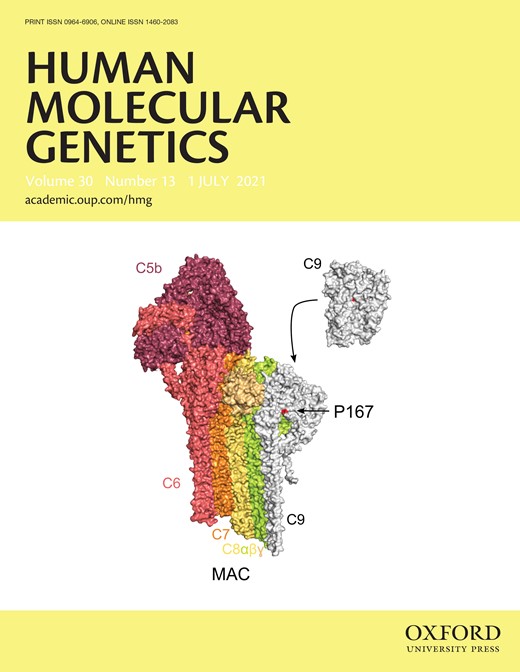
The rare C9 P167S risk variant for age-related macular degeneration increases polymerization of the terminal component of the complement cascade - 2021
Age-related macular degeneration (AMD) is a complex neurodegenerative eye disease with behavioral and genetic etiology and is the leading cause of irreversible vision loss among elderly Caucasians. Functionally significant genetic variants in the alternative pathway of complement have been strongly linked to disease. More recently, a rare variant in the terminal pathway of complement has been associated with increased risk, Complement component 9 (C9) P167S. To assess the functional consequence of this variant, C9 levels were measured in two independent cohorts of AMD patients. In both cohorts, it was demonstrated that the P167S variant was associated with low C9 plasma levels. Further analysis showed that patients with advanced AMD had elevated sC5b-9 compared to those with non-advanced AMD, although this was not associated with the P167S polymorphism. Electron microscopy of membrane attack complexes (MACs) generated using recombinantly produced wild type or P167S C9 demonstrated identical MAC ring structures. In functional assays, the P167S variant displayed a higher propensity to polymerize and a small increase in its ability to induce hemolysis of sheep erythrocytes when added to C9-depleted serum. The demonstration that this C9 P167S AMD risk polymorphism displays increased polymerization and functional activity provides a rationale for the gene therapy trials of sCD59 to inhibit the terminal pathway of complement in AMD that are underway.
-
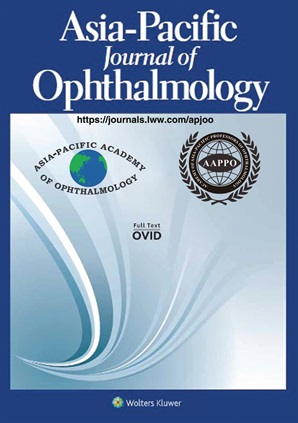
Eye Diseases Direct Interest to Complement Pathway and Macrophages as Regulators of Inflammation in COVID-19 - 2021
Many of the risk factors for developing severe coronavirus disease 2019 (COVID-19) are also risk factors for eye diseases such as age-related macular degeneration (AMD). During the past decades, macrophages and the complement pathway (as a part of the innate immune system) have been identified as important contributors to the development of AMD, and we suggest that these mechanisms are of similar importance for the clinical course of severe acute respiratory syndrome coronavirus 2 (SARS-CoV-2) infections. Based on the experience with AMD, we discuss how behavioral factors such as diet, smoking and higher body mass index, as well as genetic determinants such as the complement and immune pathway genes may lead to the overactive inflammatory phenotypes seen in some patients with COVID-19, and may in part explain the heterogeneity of disease manifestations and outcomes. Based on this experience, we discuss potential genetic research projects and elaborate on preventive and treatment approaches related to COVID-19.
-

Exploring Consensus on Preventive Measures and Identification of Patients at Risk of Age-Related Macular Degeneration Using the Delphi Process - 2021
Background: Early identification of AMD can lead to prompt and more effective treatment, better outcomes, and better final visual acuity; several risk scores have been devised to determine the individual level of risk for developing AMD. Herein, the Delphi method was used to provide recommendations for daily practice regarding preventive measures and follow-up required for subjects at low, moderate, and high risk of AMD evaluated with the Simplified Test AMD Risk-assessment Scale (STARS®) questionnaire. Methods: A steering committee of three experts drafted and refined 25 statements on the approach to be recommended in different clinical situations [general recommendations (n = 2), use of evaluation tools (n = 4), general lifestyle advice (n = 3), and AREDS-based nutritional supplementation (n = 5)] with the help of a group of international experts, all co-authors of this paper. Thirty retinal specialists from Europe and the US were chosen based on relevant publications, clinical expertise, and experience in AMD, who then provided their level of agreement with the statements. Statements for which consensus was not reached were modified and voted upon again. Results: In the first round of voting, consensus was reached for 24 statements. After modification, consensus was then reached for the remaining statement. Conclusion: An interprofessional guideline to support preventive measures in patients at risk of AMD based on STARS® scoring has been developed to aid clinicians in daily practice, which will help to optimize preventive care of patients at risk of AMD.
-

Increased Risk of Skin Cancer in 1,851 Long-Term Retinoblastoma Survivors - 2021
Background: Increased sarcoma and melanoma risks after hereditary retinoblastoma are well established, whereas less is known about epithelial subsequent malignant neoplasms (SMNs) and risks for multiple (≥2) SMNs. Methods: Leveraging long-term follow-up and detailed histologic information, we quantified incident SMN risk among 1128 hereditary and 924 nonhereditary retinoblastoma survivors (diagnosed 1914-2006; follow-up through 2016). Standardised incidence ratios (SIRs) compared cancer risk after retinoblastoma relative to the general population. We estimated cumulative incidence accounting for competing risk of death. Results: Hereditary survivors had statistically significantly increased SMN risk (N = 239; SIR = 11.9; 95% confidence interval [CI] 10.4-13.5), with SIRs >80-fold for sarcomas, nasal cavity tumours and pineoblastoma. Significantly increased risks were also observed for melanoma and central nervous system, oral cavity and breast SMNs (SIRs = 3.1-17), but not the uterus, kidney, lung, bladder, pancreas or other types. Cumulative incidence 50 years following hereditary retinoblastoma was 33.1% (95% CI 29.0-37.2) for a first SMN and 6.0% (95% CI 3.8-8.2) for a second SMN. SMN risk was not increased after nonhereditary retinoblastoma (N = 25; SIR = 0.8; 95% CI 0.5-1.2). Conclusion: Beyond the established sarcoma and melanoma risks after hereditary retinoblastoma, we demonstrate increased risk for a more limited number of epithelial malignancies than previously suggested. Cumulative incidence estimates emphasise long-term SMN burden after hereditary retinoblastoma.
-

. Functional Analysis of Rare Genetic Variants in Complement Factor I (CFI) using a Serum-Based Assay in Advanced Age-related Macular Degeneration - 2020
Factor I (FI) is a serine protease regulator of the complement system. Genetic variants in CFI are associated with advanced age-related macular degeneration (AAMD). However, the clinical and functional impact of these variants is unknown. This study assessed the functional significance of rare CFI variants using a serum-based assay. Carriers of rare variants with (n = 78) and without AAMD (n = 28), and noncarriers with (n = 49) and without AMD (n = 44) were evaluated. Function of FI was determined by measuring the proteolytic cleavage of C3b to iC3b, using the cofactor protein, Factor H.
CFI variants were categorized into three groups based on antigenic and functional assessments. Type 1 variants (n = 18) in 35 patients with AAMD demonstrated low serum FI levels and a corresponding decrease in FI function. Type 2 variants (n = 6) in 7 individuals demonstrated normal serum FI antigenic levels but reduced degradation of C3b to iC3b. Type 3 variants (n = 15) in 64 individuals demonstrated normal antigenic levels and degradation of C3b to iC3b. However, iC3b generation was low when measured per unit of FI. Thus most rare CFI variants demonstrate either low antigenic levels (type 1) or normal levels but reduced function (types 2 or 3). Results provide for the first time a comprehensive functional assessment in serum of CFI rare genetic variants and further establish FI's key role in the pathogenesis of AAMD. Stratifying patients in the clinic with a rare CFI variant will facilitate screening and targeting patients most likely to benefit from complement therapies.
-

Rare and Common Genetic Variants, Smoking, and Body Mass Index: Progression and Earlier Age of Developing Advanced Age-Related Macular Degeneration - 2020
To determine behavioral and genetic factors associated with incidence and age of progression to advanced age-related macular degeneration (AMD), geographic atrophy (GA), and neovascular disease (NV), and to quantify these effects. Longitudinal analyses were conducted among 5421 eyes with nonadvanced AMD at baseline in 2976 participants in the Age-Related Eye Disease Study (mean age of 68.8 (±5.0), 56.1% female). Progression was confirmed based on two consecutive visits on the AMD severity scale. Separate analyses for progression and age of progression were performed. All analyses adjusted for correlation between eyes, demographic and behavioral covariates, baseline severity scale, and genetic variants.
A higher genetic risk score (GRS) including eight genetic variants was associated with a higher rate of progression to advanced AMD within each baseline severity scale, especially for the highest risk intermediate level AMD category, and smoking further increased this risk. When assessing age when progression to advanced disease occurred, smoking reduced age of onset by 3.9 years (P < 0.001), and higher body mass index (BMI) led to earlier onset by 1.7 years (P = 0.003), with similar results for GA and NV. Genetic variants associated with earlier age of progression were CFH R1201C (4.3 years), C3 K155Q (2.15 years), and ARMS2/HTRA1 (0.8 years per allele). Rare variants in the complement pathway and a common risk allele in ARMS2/HTRA1, smoking, and higher BMI can lead to as much as 11.5 additional years of disease and treatment burden. Closer adherence to healthy lifestyles could reduce years of visual impairment.
-
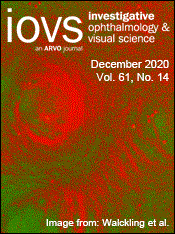
Rare and Common Genetic Variants, Smoking, and Body Mass Index: Progression and Earlier Age of Developing Advanced Age-Related Macular Degeneration - 2020
Rare variants in the complement pathway and a common risk allele in ARMS2/HTRA1, smoking, and higher BMI can lead to as much as 11.5 additional years of disease and treatment burden. Closer adherence to healthy lifestyles could reduce years of visual impairment.
-
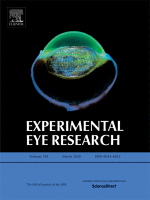
Choriocapillaris dropout in early age-related macular degeneration - 2020
The study demonstrated attenuation of submacular CC in early AMD subjects but no vascular pathology was observed outside the submacular region. While the affected area in some eyes was quite extensive histologically, these changes may not be detectable clinically using standard in vivo imaging.
-
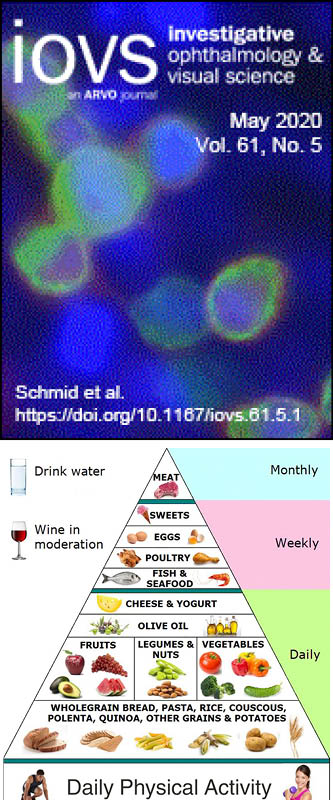
Genetic Susceptibility, Diet Quality, and Two-Step Progression in Drusen Size - 2020
Drusen deposits in the retina are hallmarks of AMD in the early and intermediate stages of AMD. A higher drusen burden increases risk of developing late or advanced stages of AMD with visual loss.
We found that a higher genetic susceptibility was related to drusen growth. A Mediterranean-style diet with healthful nutrient-rich foods (like fruits, vegetables, legumes and fish) reduced enlargement of drusen over time. These results highlight and underscore the benefits of the Mediterranean diet on progression of AMD as we first reported in 2015. (see article below).
-
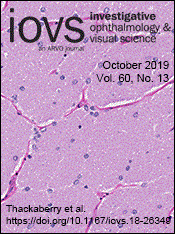
Association Between Perifoveal Drusen Burden Determined by OCT and Genetic Risk in Early and Intermediate Age-Related Macular Degeneration - 2019
Each type of advanced AMD is generally preceded by earlier stages that are characterized by the formation of drusen between the retinal pigment epithelium (RPE) and Bruch's membrane. The elevation of the RPE layer can be quantified by spectral domain–optical coherence tomography (SD-OCT) devices. Here, we used this feature from Zeiss Cirrus OCT to automatically measure the area and volume of drusen and found associations between these parameters and genes that are highly associated with advanced AMD. We found that risk variants in the CFH gene and in ARMS2/HTRA1 gene are independently associated with greater size of drusen.
Read more about this research on the IOVS journal (free access).
-
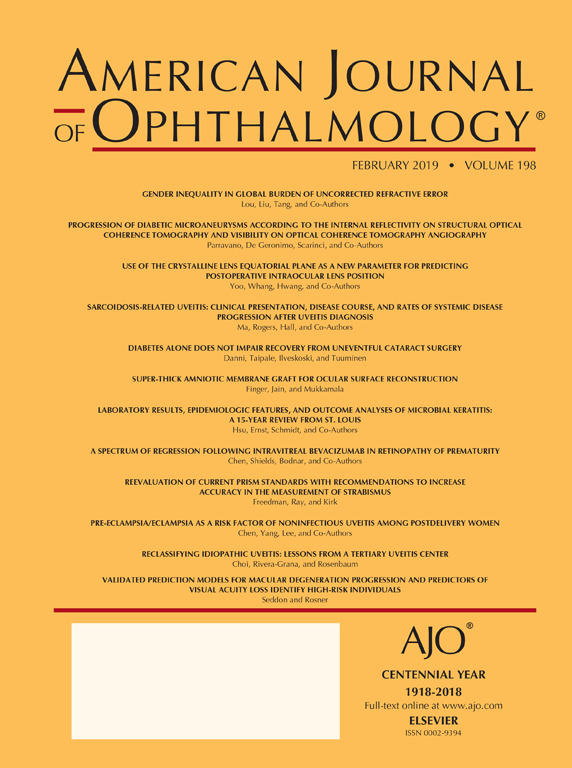
Validated Prediction Models for Macular Degeneration Progression and Predictors of Visual Acuity Loss Identify High-Risk Individuals - 2019
The American Ophthalmological Society (AOS) Thesis 2019.
We expanded our previous Age-related Macular Degeneration (AMD) prediction models by including 13 genes, (a polygenic risk score or GRS) plus demographic risk factors, and showed for the first time the ability of the model to predict visual acuity outcomes. We also validated the model in a large independent cohort. Identifying high-risk individuals at earlier stages could lead to more precise ways to prevent and treat AMD.
Check out the publication at the American Journal of Ophthalmology.
-
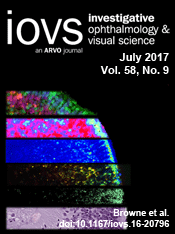
Optical Coherence Tomography Features Preceding the Onset of Advanced Age-Related Macular Degeneration - 2017
We evaluated morphologic features of the retina and choroid on optical coherence tomography (OCT) and found that OCT features of the retina and choroid could predict progression to advanced stages of AMD, including retinal hyper-reflective loci, nascent GA, and other inner and outer retinal irregularities.
Read more about this research on the Investigative Ophthalmology & Visual Science July 2017.
-
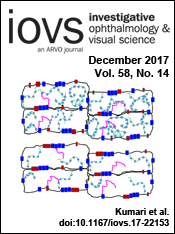
Macular Degeneration Epidemiology: Nature-Nurture, Lifestyle Factors, Genetic Risk, and Gene-Environment Interactions - Weisenfeld Award Lecture - 2017
This article is a good summary of decades of research on AMD, including initial studies on diet, nutrition, smoking, and other modifiable factors, as well as common and rare genetic discoveries in the Seddon Lab, related to AMD onset and progression.
Checkout the publication at the IOVS journal.
-
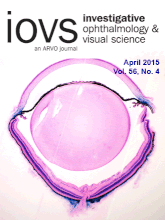
Risk Prediction for Progression of Macular Degeneration: 10 Common and Rare Genetic Variants, Demographic, Environmental, and Macular Covariates - 2015
We determined the association between genetic variants and transition to advanced AMD, and expanded our predictive model and updated our online application to assist in clinical decision making.
-
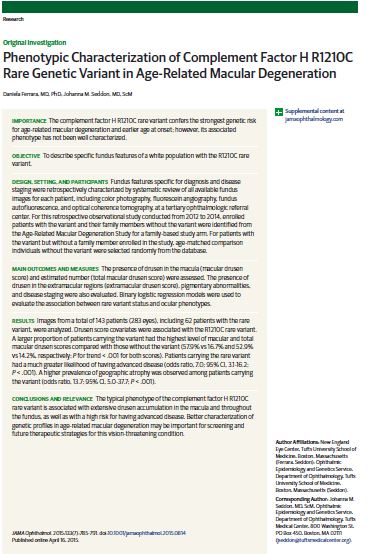
Phenotypic Characterization of Complement Factor H R1210C Rare Genetic Variant in Age-Related Macular Degeneration - 2015
The complement factor H (CFH) R1210C rare variant confers the strongest genetic risk for age-related macular degeneration and earlier age at onset. Here, Dr. Seddon and Dr. Ferrara evaluated macular fundus features and disease staging among people with and without this rare variant. We found for the first time that the typical phenotype of the CFHR1210C rare variant is extensive drusen accumulation in the macula and throughout the fundus, as well as a high risk for advanced disease.
-
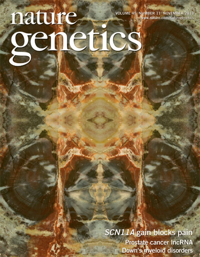
Rare variants in CFI, C3 and C9 are associated with high risk of advanced age-related macular degeneration - 2013
Together with our collaborators in Boston, other US and European labs, we discovered more novel genetic variants associated with risk of advanced AMD in genes in the complement immune pathway (CFI, C3, and C9 genes) with high impact on the development of this disease. We also showed the initial functional impact of the C3 rare variant.
-
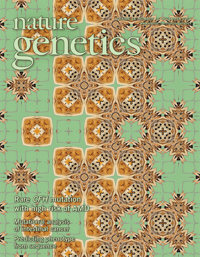
A rare penetrant mutation in CFH confers high risk of age-related macular degeneration - 2011
Together with our collaborators in Boston, other US and European labs, we discovered a rare, high-penetrance variant in the complement factor H (CFH) gene associated with increased risk of age-related macular degeneration. This finding suggests that loss-of-function alleles at CFH are likely to drive AMD risk and represents one of the first instances in which a common complex disease variant has led to the discovery of a rare penetrant mutation. This rare variant is the strongest genetic risk factor for macular degeneration to date.
-
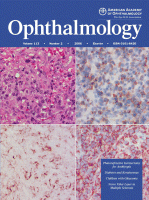
Clinical Age-Related Maculopathy Staging System (CARMS) - 2006
The Clinical Age-Related Maculopathy Staging (CARMS) system for age-related maculopathy (ARM), uses a simple grading scale designed for clinical practice and clinical research protocols. It is a 5-level clinical scale, a valid and reliable staging system that can be used in both clinical practice and in clinical research protocols involving patients with all stages of ARM. Dr. Seddon evaluates and grades all ocular records and imaging data using this system.
-
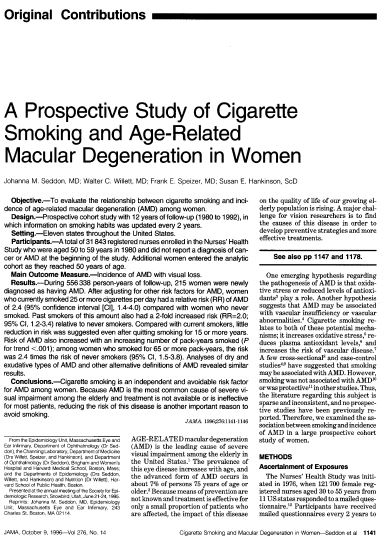
A Prospective Study of Cigarette Smoking and Age-Related Macular Degeneration in Women - 1996
Dr. Seddon conducted the first prospective study to detect the association between cigarette smoking and incidence of AMD. Her team led the analyses of data from the Nurses' Health Study between 1980-1992 in participants who did not report a diagnosis of cancer or AMD at the beginning of the study. We found that women who smoked 25 or more cigarettes per day had double the risk of AMD compared with women who never smoked. Past smokers also had higher risk.
-
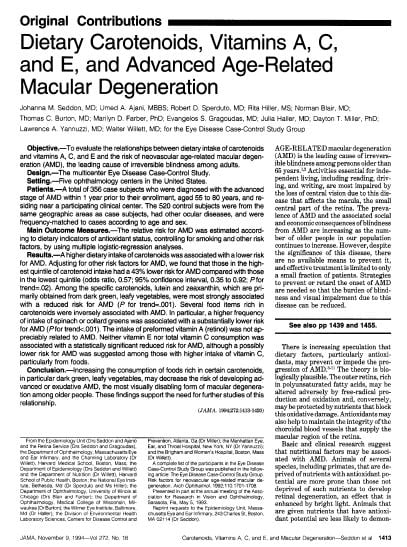
Dietary Carotenoids, Vitamins A, C, and E, and Advanced Age-Related Macular Degeneration - 1994
Dr. Seddon led a team of collaborators to obtain diet data at 5 centers using her food frequency questionnaire, and this was the first study to evaluate the intake of specific nutrients and the risk of advanced AMD. Her analyses found that the carotenoids, lutein and zeaxanthin, primarily obtained from dark green, leafy vegetables like spinach and kale, were most strongly associated with a reduced risk for AMD. This was the first evidence leading to current management of patients with AMD to increase intake of dark green, leafy vegetables, and other food rich in lutein and zeaxanthin.
-

FIND OUT MORE PUBLICATIONS RELATED TO DR. SEDDON - click this link
Search for Dr. Seddon's and her team's complete research publications at PubMed.
